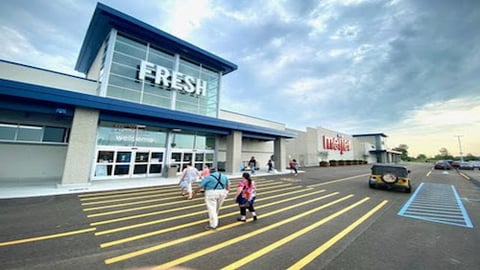Food Retailers Demand Climate-Friendly Refrigerants: New Report
With food retailers facing increasing regulatory pressures at the international, federal and state levels to transition to climate-friendly natural refrigerants, the North American Sustainable Refrigeration Council's (NASRC) new report emphasizes retailers’ preferences in using natural refrigerant-based condensing unit technologies.
NASRC conducted a survey of 13 major food retailers representing more than 17,000 U.S. locations to characterize retailer demand for natural refrigerant-based condensing units. The report summarizes retailer preferences for carbon dioxide (CO2)- and propane-based condensing-unit product applications, load type and corresponding capacity ranges, condensing medium, and other considerations and requirements.
“The most significant takeaway from the report is that it demonstrates a strong demand for natural refrigerant-based condensing-unit technologies in the U.S., with 100% of participating retailers indicating interest,” said Danielle Wright, executive director of NASRC.
According to the organization, many food retailers are still using hydrofluorocarbon (HFC) refrigerants, which are considered super greenhouse gases and have thousands of times more global-warming potential (GWP) than natural refrigerants. Transitioning away from harmful HFCs to natural refrigerants like ammonia, CO2 and propane is not so simple, as it requires replacing the entire refrigeration system, which is unfeasible from a cost and, many times, a technical perspective.
NASRC’s report demonstrates the need for cost-effective, modular technology options that allow food retailers to migrate their refrigeration loads and displace the existing system over time.
Almost 80% of retailers surveyed were interested in condensing unit applications for existing stores. The majority indicated a preference for CO2-based condensing units to serve medium-temperature refrigerated display cases.
“The real challenge is how to accelerate emissions reduction in the 38,000 stores that exist today,” said Wright. “We need solutions that can be phased in as part of the normal equipment replacement schedule and serve the refrigeration capacity expansion that is happening across the food retail sector today due to the rise in online shopping.”
The COVID-19 pandemic has forced food retailers to re-evaluate the refrigerated staging areas for grocery pickup because of the increased number of online orders.
NASRC indicated that natural refrigerant-based condensing units are an ideal option due to their ability to serve unique load types and reduce overall GWP of the system. However, despite increasing interest from food retailers, few product options are available in the U.S. market compared with Europe and Asia.
“Ultimately, our goal is to bring more natural refrigerant product solutions to the U.S. market,” said Wright. “This report was the first step in bridging the information gap by leveraging our strong network of stakeholders.”
Last year, NASRC launched a new directory to connect industry thought leaders who are supporting supermarkets in the transition to climate-friendly refrigerants. The directory showcases NASRC’s more than 130 member companies and the services they offer, allowing users to search by product, service type, service territory and refrigerant, among other categories.
Mill Valley, California-based NASRC is a nonprofit working in partnership with the supermarket industry to advance the use of climate-friendly natural refrigerants. The organization works with stakeholders from across the supermarket refrigeration industry, including more than 28,000 food retail locations in the United States, to eliminate the barriers preventing the adoption of natural refrigerants.






